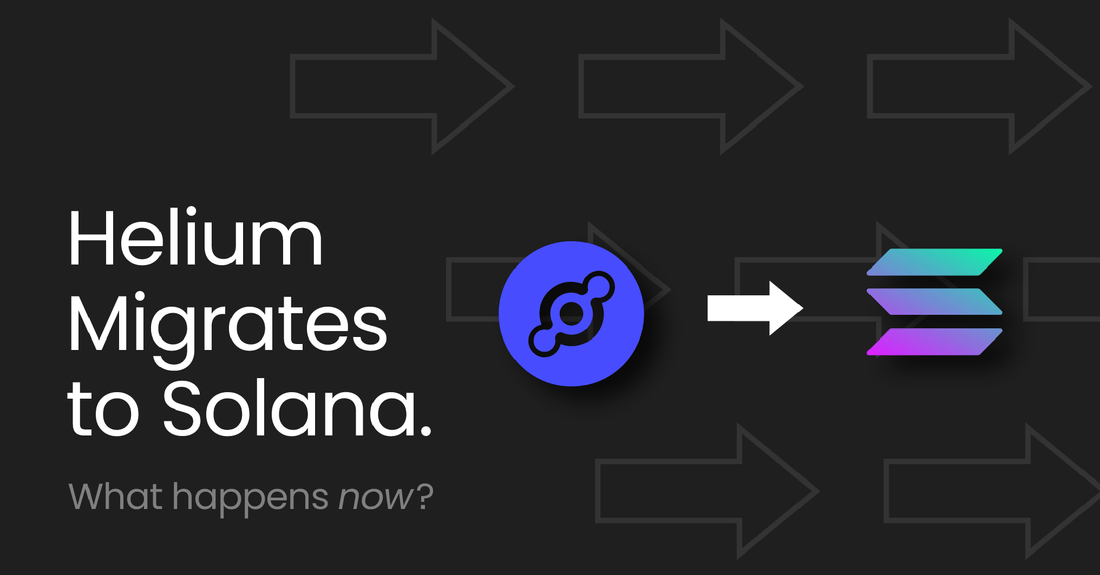The Helium Network, a decentralized wireless infrastructure built to power a wide range of applications, is gearing up for a significant milestone. On April 18, 2023, at 9 am PST, the network will officially migrate to the Solana blockchain. This momentous move follows a community-driven proposal, HIP70 - Scaling the Helium Network, and aims to capitalize on Solana's scalability, low transaction costs, and high-performance capabilities. Originally slated for March 27th, the delay has only intensified the anticipation for the migration.
In this article, we will discuss the reasons behind this strategic move, the benefits it will bring to the Helium Network, and the potential impact it will have on the Internet of Things (IoT) and Mobile networks.
The Driving Force Behind the Migration
The Helium Network has experienced significant growth since its inception, with a rapidly expanding ecosystem of devices and applications. This growth has brought with it an increased demand for network resources, necessitating a move to a more scalable and efficient blockchain platform. Solana, with its lightning-fast transaction throughput and energy-efficient consensus mechanism, provides the perfect solution to meet these demands.
Enhanced Scalability
One of the primary reasons for the migration is Solana's ability to handle a high transaction throughput. This means that the Helium Network will be able to support even greater scale, allowing more devices and applications to connect to the network without affecting its performance. This is crucial for the IoT and Mobile networks, which rely on the Helium Network for secure and reliable communication between devices. With Solana, the Helium Network can continue to grow without encountering any scalability issues.
Lower Transaction Costs
Another advantage of migrating to Solana is the reduced transaction costs. The Helium Network uses Proof of Coverage (PoC) as its consensus mechanism, which requires validators to stake tokens to participate in the network. This process incurs transaction fees, which can be costly on some blockchains. However, Solana's low transaction fees will allow validators to participate in the Helium Network without incurring high costs, making it more accessible and inclusive for all.
Improved Proof of Coverage Algorithms
Proof of Coverage is a key component of the Helium Network's consensus mechanism, and the migration to Solana will enable more sophisticated PoC algorithms to be developed. This will increase the accuracy of coverage mapping, allowing the network to provide more precise location data and improving its overall efficiency.
Enhanced Robustness
The Helium Network already has a reputation for being a robust and reliable solution for IoT and Mobile networks, but the migration to Solana will enhance this even further. Solana's unique consensus mechanism, which relies on Proof of History, allows for faster and more secure block confirmation, reducing the likelihood of chain reorganizations and other network disruptions. This will provide an even more stable and dependable platform for developers to build their applications on.
Impact on IoT and Mobile Networks
The migration to Solana is expected to have a significant impact on the IoT and Mobile networks. With the enhanced scalability and lower transaction costs, more devices and applications will be able to connect to the network, leading to greater innovation and growth in the industry. The improved PoC algorithms and enhanced robustness will also provide more accurate and reliable data for location tracking and other applications.
Furthermore, the Helium Network's migration to Solana is a testament to the growing importance of blockchain technology in the IoT industry. As more devices become connected to the internet, there is a need for secure and efficient communication between them. The Helium Network, powered by Solana, provides a robust and scalable solution for this, paving the way for a more connected and automated future.
The Helium Network's migration to the Solana blockchain is a significant milestone in the development of decentralized wireless infrastructure. This move, driven by the community, represents a commitment to scaling and enhancing the network's capabilities, making it an even more robust solution for IoT and Mobile networks. With improved scalability, lower transaction costs, and enhanced robustness, the Helium Network is poised for even greater growth and innovation in the years to come.
You can read more about the move via the Helium Foundation.
